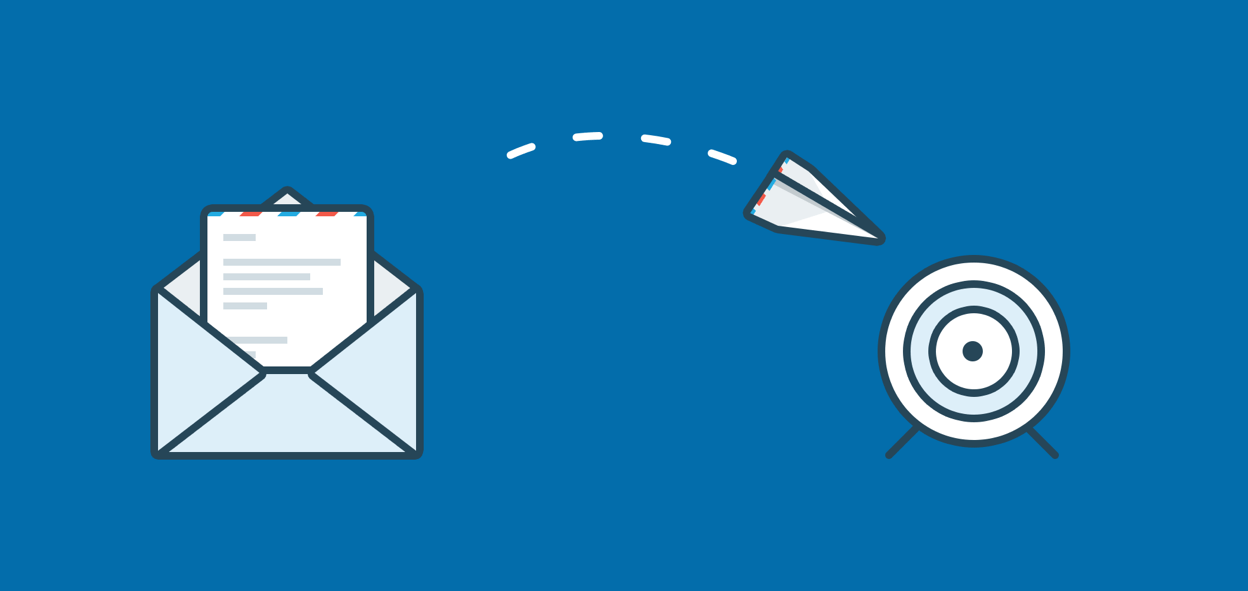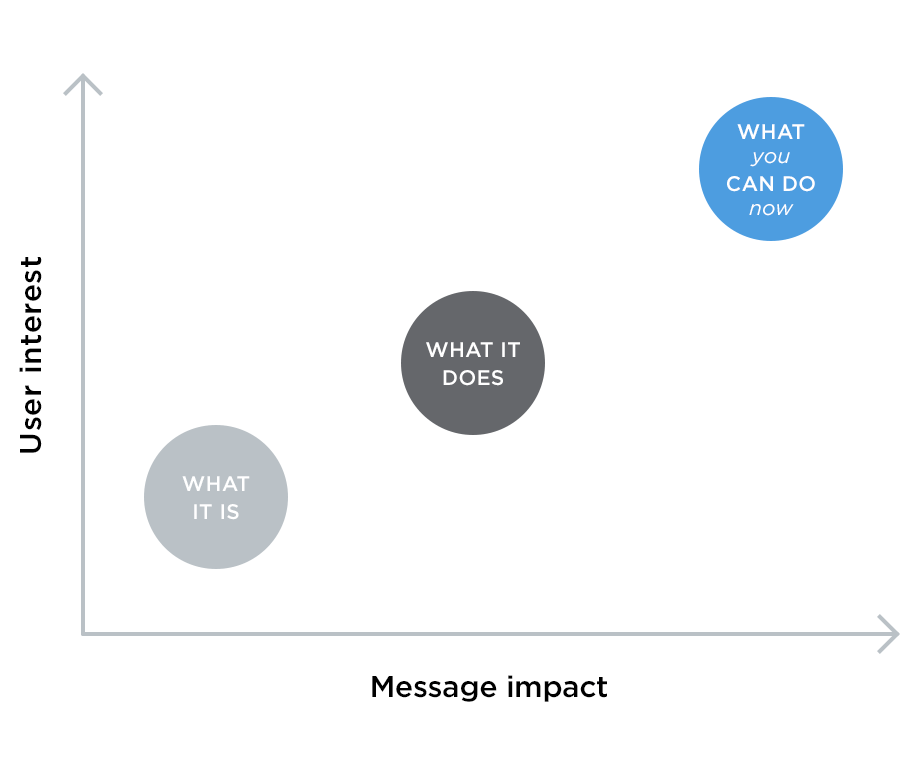
Effective messages have real goals
Knowing precisely what you want to achieve from a message before you send it is key. Not only to crafting the right kind of message but also to getting the response you’re looking for.
Different messages require different levels of interaction and commitment from your users. Whether you’re circulating a questionnaire or launching a new product line, you need to be clear on the goal of your message from the outset. Having a clear goal in mind will inform the focus of your message, and Intercom’s Message Goals feature allows you to see what impact the message has had in your product.
Let’s face it, without a clear goal, how will you know if your message has been successful or not? You simply can’t communicate without a stated goal.
In an age of metrics wrangling and unbridled growth hacking, it’s fair to ask what constitutes a real goal for any message? Well, what it isn’t about is open rates or click-through rates. Both are valid intermediate steps in themselves, but never the final goal. It’s unhelpful to obsess about the stats that dictate how users interact with your message.
Real goals should focus instead on the change you’re trying to elicit in your users. Is it more frequent usage of your product? Is it to get them to update their billing details? Do you want them to try out a new feature?
Let’s look at some different scenarios where you want to message users and the goals that those messages might have.
Onboarding and engagement
The goal here is to get your users to experience getting value from your product, or a specific part of your product. In a lot of these cases you are talking about users who are trying your product for free but who you hope that after two weeks, a month or a quarter, will convert to paying customers.
In the SaaS world the only contact you have with these customers may be messages you send during this free trial period so it’s essential you make them count. Getting this right can hinge on an often overlooked strategy of:
- asking users what they are trying to achieve with your product, and
- tailoring your messaging for the different types of user goals.
It’s the low hanging fruit of onboarding.
New product improvement

This may appear to have a very similar goal to onboarding or re-engagement but there is a very important distinction which will inform your messaging. In this case you are trying to get people to try something brand new they haven’t seen before. You need to explain how they will benefit from using it, not the great lengths you have gone to in order to build it. The two most common goals in this scenario are:
- Increase the adoption rate for your product, i.e. get more people to use it.
- Increase the frequency of usage of your product, i.e. get people to use it more often.
The majority of the work you do in communicating with customers will fall into the buckets of: “get people to start using a new feature”, “get more people using a feature” or “get people using a feature more”. Each have a different metric for success, and as always, until you know what you’re shooting for, you’ll struggle to hit the target.
Announcement
In this context we are using the term announcement to cover things like account changes, billing updates or changes to your terms and conditions. These messages can be fairly prosaic in tone but can be extremely important for your users. You have to ensure these messages have been received and that users understand the implications for them. It’s also essential that they know what action, if any, is required and how to get any help if they need it. In these scenarios it’s much safer to be clear rather than clever.
Newsletter, roundup or update
This is probably the most debatable one. Everyone agrees there are many soft benefits to regular communications with potential and current users, customers, leads, former users and those who might just be interested in your business or the content you produce. But it can be more difficult to agree on what the “harder” goals of these messages are.
Here are three different goals that a regular newsletter might have:
- Staying top of mind with customers (and hopefully prompting them to log in again).
- Rewarding loyalty of paying customers by giving them access to an exclusive feature or content.
- Get lapsed users to come back and have another look at your product by showing them all the cool things you’ve added since they last used it.
Survey, quiz, research or question

You might think the goal of telling people about your survey or quiz is to get them to fill it out or answer it. Great if you can get them to do that, but again that’s only an intermediate goal.
What you’re actually trying to do is gather data that will inform or drive changes you’re considering in your product or business. It’s not about getting “more answers”, just like it’s not about spoofing open rates with trumped up subject lines. Add “Win an Apple Watch” to your subject line and you’ll get lots of responses to your survey, but just how insightful will they be?
If you’re going to base significant business or product changes on this data, you’d want to make sure it’s good data. When and where people receive the message will have a significant bearing on the quality and quantity of responses you receive. And who is giving you the response should have a significant impact on how much weight you give those responses. This is simple quality over quantity with the value resting in the data and what you can subsequently do with it.
What do you want to achieve?
Knowing what you want to achieve before you engage your customers is essential for structuring messages and for getting the results your after – get this right from the get-go and the responses will bring their own rewards.
This post has been adapted from Intercom on Customer Engagement, our recently published book on sending the right people, the right message, in the right way, at the right time. You can download a free copy.







